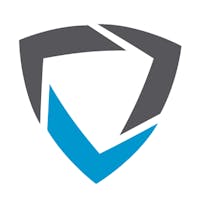A few years ago, Neosho School District in Southwest Missouri realized they were in a crisis. Their suicide rates between 2014 and 2018 were well above the national average. In fact, this small district of roughly 4,700 children was averaging two suicides per year. They knew they had to take action.
At that time, Tracy Clements, a building-level counselor, was asked to step into her current position as Director of Counseling Services for the district and tasked with establishing a suicide prevention plan. She recently set aside some time to speak with us about the tools they’ve put in place to help lower suicide rates and promote mental health. But just moments into the conversation, Clements was interrupted by an alert from the district’s GoGuardian Beacon system.
"The system analyzes online activity in real time," says Clements, "and alerts us when at-risk behavior is detected. This message might suggest self-harm."
The notification also went to the building counselor, Clements explains. "She will meet with the student today and say, 'Hey, it looks like you're having some troubles,' and help them process that. Maybe the student just needs a session with the counselor, or maybe we'll need to refer them for outpatient counseling."
EdSurge: Well, it’s clear to see why you felt the need to implement a student alert system. How did you land on GoGuardian Beacon as the right tool for your district?
Clements: My first goal was to get a good, solid suicide prevention plan implemented. I had written one up prior to starting my current position, but I didn't have the authority or resources to implement it. When they created my current position, it opened up a lot of doors.
We were already using the GoGuardian platform for device management, filtering and instructional delivery. It manages the content that our network accesses, blocking anything harmful or explicit. The teachers can also use the GoGuardian Teacher platform to see what kids are working on—make sure they're staying on task.
When we learned about GoGuardian’s Beacon software, we did a demo, and I thought, "I need that." It searches for concerning activity related to suicide or self-harm on students’ school-managed accounts. We also enabled a feature that provides students a message on their screen when Beacon generates a suicide or self-harm alert. It not only notifies our staff, but also deploys a pop-up on the student’s screen that acknowledges they may be having thoughts of suicide and encourages them to reach out to a suicide prevention hotline or speak with a trusted person until we can reach them.
If you or someone you love is struggling with suicidal thoughts or feeling hopeless, please call 1-800-273-8255 to speak with someone now or contact the Crisis Text Line by texting TALK to 741741.
How do these alerts help you and your students during times of remote or hybrid learning?
We started with Beacon in February 2019, right before the pandemic. It was perfect timing. When the world shut down, and our students were all at home, we had Beacon to help our school counselors identify students who may be struggling. We were very, very lucky. I just can't imagine what it would have been like that first year to have all those kids remote and no way for us to tell if they were doing okay.
I do think that we have helped many kids with Beacon. Beacon generated alerts, and we made contact with parents to get kids the help they needed. The active planning alerts have allowed us to help students who were in the midst of a crisis.
Can you explain what happens in those situations?
These come as a phone call to my team from the Beacon safety specialists, rather than a text and email. We’ve had multiple instances where we’ve gotten alerts about a student searching for ways to end their life. So, we reached out to the parents immediately (in one case, I went to the student’s home when I couldn’t reach the parents), and we were able to stop students who were preparing to end their life.
Those close calls are the really powerful ones, but I think it's doing even more good for situations like the alert I just got. This student's reaching out for help. We're able to get services in place before they get to the point of an active planning alert, of attempting suicide or being at risk of attempting suicide.
How would you describe Beacon’s overall impact on your district?
I genuinely love this platform. It helps me do my job much more effectively because I can't be everywhere at all times. I'm certain we've saved the lives of several kids, and I also think we've improved the quality of life for lots of others because we've been able to get services in place.
We know a lot of kids are not going to come right out and say, “I need help.” Often, they may search online for ways to harm themselves before reaching out to a parent or professional. With Beacon in place, we are able to help kids who may be struggling and offer support before things potentially get too bad.
We lost a student to suicide in May 2018. It’s still painful for our community to feel their absence. I don't ever want to experience that again, either professionally or personally. It's horrible. So, I do absolutely everything I can to try to make sure that our community doesn't have to go through that.



